A Network Of Leaders
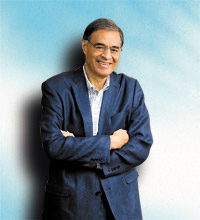
Mufi Hannemann
ANTHONY CONSILLIO PHOTO
On a recent Saturday afternoon, a group of Hawai‘i’s finest leaders decided to step out of the sunlight and into the shadows of Hālawa Correctional Facility. To some, those moments within the confines of the prison were unnerving; to others, what they saw left them heartbroken. But while reactions varied, each leader ultimately emerged from the facility with a greater understanding of the criminal justice system.
The chance at a behind-the-scenes experience like this is what inspired 36 local leaders — a group made up of prominent business people, lawmakers, TV personalities and others — to become part of the fellowship program known as Pacific Century Fellows, or PCF. Mirrored after the national program, White House Fellows, PCF encourages its Fellows to collaborate and think outside the box when searching for solutions to Hawai‘i’s myriad of problems — including, for example, how to deal with the aging population in state prisons.
At its core, PCF requires Fellows to share their mana‘o, talents and expertise with others while strengthening the belief that everyone has something to contribute to society.
“I kind of follow the admonition of the Good Book: To whom much is given, much is required,” says PCF founder Mufi Hannemann. “It has been so gratifying to see every single one of them embrace it.”
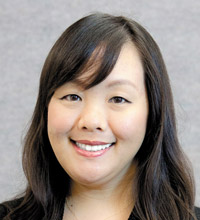
Michele Kurihara-Klein
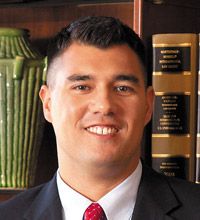
Michael Iosua
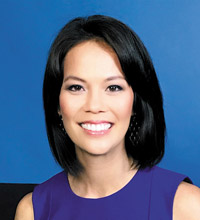
Mahealani Richardson
Hannemann first recognized the value of the program as a White House Fellow in the early 1980s.
“It instilled in our minds and hearts that we all have a contribution to make,” he says. “It was a program that did so much for me. When I came back to Hawai‘i, I wanted to replicate it as much as I could.”
Part of the replication involved PCF’s approach to leadership. For example, rather than creating leaders, the program searches for already-established business and civic stalwarts, and encourages them to see the bigger picture by becoming even greater community-minded individuals.
Fellows begin the nine-month program with a two-day retreat, where they spend time away from the hustle and bustle of everyday life and focus on narrowing down issues they want to learn more about.
“Every class is different, and every class has an opportunity to design their own curriculum,” says Michele Kurihara-Klein, legislative officer for the Hawai‘i Government Employees Association. “The class drives itself, and I think that’s very different from a lot of other fellowship programs. There’s a lot of involvement from the cohort itself.”
Each month, Fellows gather for a special education “day” — based on the themes chosen at the initial retreat — when they are allowed to see all the moving parts behind some of Hawai‘i’s most disputed issues, including those in agriculture, education, transportation and housing.
“I am able to see things in different dimensions, having talked to leaders and people doing work behind the scenes every day and see what issues they’re facing,” says Joy Barua, Kaiser Permanente Hawai‘i senior director, government and community relations & community benefit. “Typically when we work in our functional areas of expertise, we’re doing our jobs in those confines, but it doesn’t allow us the opportunity or the time to go out and look at the world outside of our industries.”
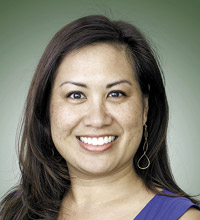
Diane Paloma
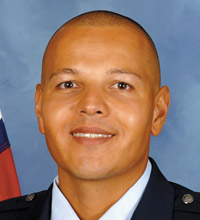
Caleb Lisenbee II
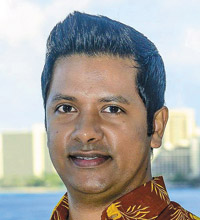
Joy Barua
Hawai‘i News Now anchor/reporter Mahealani Richardson was inspired during the group’s stay aboard USS John C. Stennis, where she gained insights into military operations and heard firsthand the stories of young service members and their reasons for joining the military.
“It was so eye-opening to me,” Richardson says. “I’m just very grateful that we were able to meet so many people and really have conversations with them about their jobs and their way of thinking.
“Journalists get access to all kinds of interesting things, and even as a journalist you don’t get to talk to someone for an entire hour or more,” she adds. “But through this particular cohort, we had the opportunity to go to these places and pick the brains of leaders in our community.”
Michael Iosua, meanwhile, viewed the education day as one that really struck a chord. The Imanaka Asato director of governmental affairs already was able to see the shortcomings and flaws within Hawai‘i’s educational system, but through PCF gained greater understanding as to how big and complicated of an issue it is.
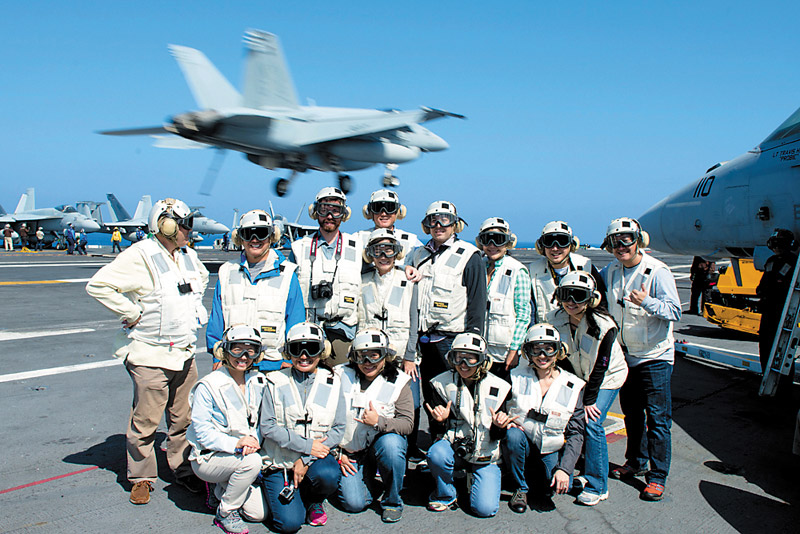
Pacific Century Fellow’s 15th cohort spent education days aboard USS John C. Stennis
“It’s not just about why we don’t have enough teachers, or why we can’t recruit enough teachers,” he says. “There are so many things I didn’t understand until I sat down with industry leaders.”
For Barua and Kurihara-Klein, the criminal justice day was an experiential opportunity of a lifetime. They, along with their classmates, spoke with city prosecutor Keith Kaneshiro about the state’s judicial system, visited HPD’s training facility in Waipahu and Hālawa Correctional Facility, and took part in a ride-along with HPD officers.
“We were able to see all of the different aspects and sides,” says Kurihara-Klein. “It was just this multi-layered, comprehensive education day.”
Barua adds: “It was very enlightening. There were so many dots that were connected, and we don’t always get that total picture.”
Conceptually, it might seem odd to have a group of nearly 40 people from various industries (and with vastly differing opinions) tackle the state’s most controversial issues. But, says Hannemann, that’s the whole point.
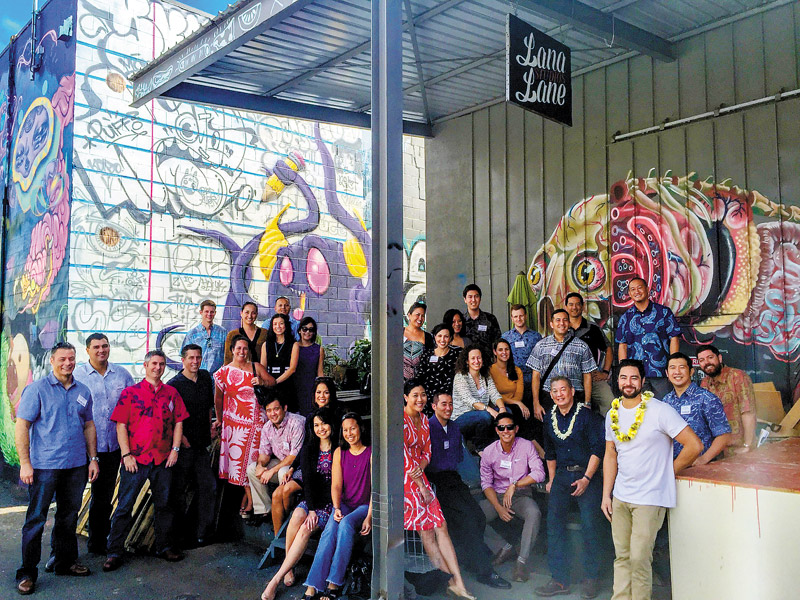
looking at POW! WOW! Hawai‘i art in Kaka‘ako
“They all come with a different mindset and can contribute in different ways,” he says.
U.S. Air Force Maj. Caleb Lisenbee II got a behind-the-scenes look at Hawai‘i Island’s Mauna Kea and learned about the state’s efforts with clean energy.
“It reinforced the fact that the island, where it’s placed on the globe, is so unique,” he says. “It’s the perfect environment for that type of research to be taking place, which will benefit the rest of the world.”
Some, like Lisenbee, are here on island for only a short period, but have fresh eyes and outlooks, and apply their knowledge base to local issues.
“PCF really took me out of my regular day-to-day environment,” Lisenbee adds. “You get to see how different people view certain challenges and issues. Being around people from other sectors of our community is such a learning opportunity.”
In fact, Hannemann purposely included a military component to the program.
“Individual military people may come and go, but the military will always be a part of Hawai‘i,” he says.
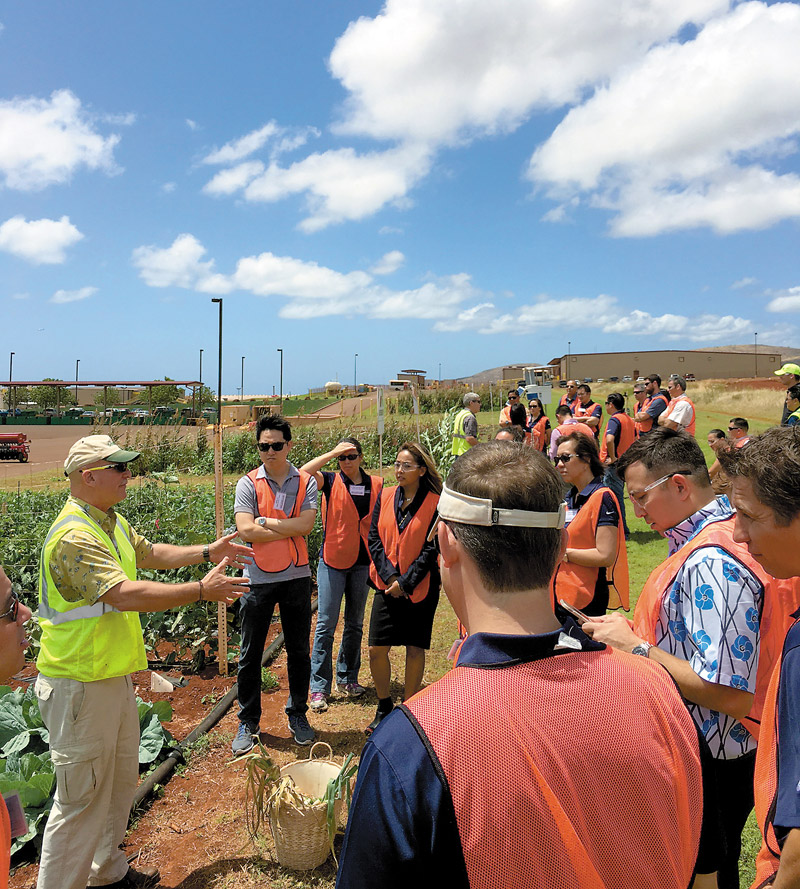
Fellows in PCF’s most recent cohort spent time learning about the struggles faced by the state’s agricultural industry and how it impacts the community
The learning days, while fun and educational, are not the basis for touting the benefits of being a Fellow. The overwhelming response is gratitude for the friendships forged and relationships created. It’s a sentiment that flows through each cohort member.
“When I go out into future endeavors, my PCF class would support me no matter what,” says Diane Paloma, director of The Queen’s Health Systems’ Native Hawaiian Health program, whose husband Jason was part of PCF’s class of 2014. “Being able to hang out non-professionally (through PCF) carries over into when we do need to work together on professional endeavors. Having that connection makes it easier, faster, more efficient.”
Adds Kurihara-Klein: “I met a lot of lifelong friends just by virtue of participating in this program.”
And it isn’t just links within the cohort that benefit Fellows. The resounding sentiment echoes: Once a Fellow, always a Fellow.
Since 1997, PCF has graduated 15 cohorts and its alumni network is unrivaled in the state — and very active. Former Fellows continue to pour resources and time into PCF, something Hannemann is more than grateful for. And, it seems, the PCF network base is only going to grow. Aside from the state’s alumni, PCF also has branched out to Joint Region Marianas to form Pacific Century Fellows Program Marianas Chapter.
“We count on alumni, and they always step forward to help out. I see the important role we play in the Pacific-Asian region,” Hannemann says. “And we’ve only scratched the potential.”
Pacific Century Fellows now is accepting applications for its Class of 2017-18. Registration deadline is June 30, and finalists will be notified in July.
Applications, regulations and more information can be found online at pacificcenturyfellows.com.






